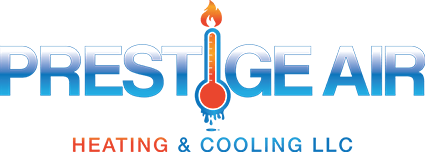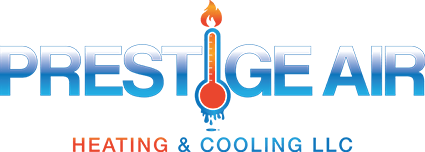Providing Prestige
Heating & Cooling Service
Bergen County Indoor Air Quality
Improving Your Home's IAQ
Our goal at Prestige Air Heating & Cooling, LLC is to make sure you and your family are safe, comfortable, and well-informed. Nowhere is this clearer than with our comprehensive indoor air quality solutions. If you or a family member suffer from allergies, asthma, or respiratory issues, the importance of your home’s indoor air quality cannot be overstated. Our technicians are all licensed, bonded, and insured, and are ready to help you breathe easier.
Our exceptional indoor air quality services include:
- Air filter installation or repair
- Humidifier or dehumidifier services
- Air purification installation, repair, and replacement
To learn more about our indoor air quality solutions, contact our team today at (973) 755-2210.
Signs of Poor Indoor Air Quality
Poor indoor air quality can have various signs, some of which include:
Stale or stuffy air: If your indoor environment feels consistently stuffy or stale, it could indicate a lack of fresh air circulation.
Odors: Unpleasant or persistent odors, such as mustiness, mold, mildew, or chemical smells, can be a sign of poor indoor air quality.
Visible mold or mildew: Mold or mildew growth on surfaces such as walls, ceilings, or around windows can indicate excessive moisture levels and poor air quality.
Excessive dust: Excessive dust accumulation on surfaces, furniture, and HVAC vents may indicate poor air filtration or circulation.
Respiratory discomfort: Symptoms such as coughing, sneezing, throat irritation, or worsening of asthma and allergies can be signs of poor indoor air quality, especially if they improve when you leave the indoor environment.
Humidity issues: High humidity levels can promote mold and mildew growth, while low humidity can lead to dryness and discomfort. Both extremes can indicate poor indoor air quality.
Condensation: Condensation on windows or walls can indicate excessive moisture levels indoors, which can contribute to mold growth and poor air quality.
Decreased indoor air quality index (AQI): Monitoring the indoor AQI through specialized sensors can provide real-time data on pollutants such as particulate matter (PM2.5), volatile organic compounds (VOCs), carbon monoxide (CO), and others, indicating the overall quality of indoor air.
If you notice any of these signs, it's essential to address the underlying causes to improve indoor air quality and create a healthier living environment. This may involve actions such as improving ventilation, using air purifiers, addressing sources of pollution, and maintaining optimal humidity levels.
Signs of Poor Indoor Air Quality
Poor indoor air quality can have various signs, some of which include:
- Stale or stuffy air: If your indoor environment feels consistently stuffy or stale, it could indicate a lack of fresh air circulation.
- Odors: Unpleasant or persistent odors, such as mustiness, mold, mildew, or chemical smells, can be a sign of poor indoor air quality.
- Visible mold or mildew: Mold or mildew growth on surfaces such as walls, ceilings, or around windows can indicate excessive moisture levels and poor air quality.
- Excessive dust: Excessive dust accumulation on surfaces, furniture, and HVAC vents may indicate poor air filtration or circulation.
- Respiratory discomfort: Symptoms such as coughing, sneezing, throat irritation, or worsening of asthma and allergies can be signs of poor indoor air quality, especially if they improve when you leave the indoor environment.
- Humidity issues: High humidity levels can promote mold and mildew growth, while low humidity can lead to dryness and discomfort. Both extremes can indicate poor indoor air quality.
- Condensation: Condensation on windows or walls can indicate excessive moisture levels indoors, which can contribute to mold growth and poor air quality.
If you notice any of these signs, it's essential to address the underlying causes to improve indoor air quality and create a healthier living environment. This may involve actions such as improving ventilation, using air purifiers, addressing sources of pollution, and maintaining optimal humidity levels.
Benefits of Indoor Air Quality Services
Poor indoor air quality can have serious effects on your health. Not only will it exacerbate allergy symptoms, but can also cause headaches, fatigue, nose, eyes, and throat problems, as well as flu-like symptoms.
In addition to air purifiers that help eliminate the biological contaminants, keeping your humidity levels under control can actually keep your home feeling more comfortable, and even lower your energy bills.
4 benefits of indoor air quality solutions:
- Eliminates allergens like dust, dander, mold, and pollen -
Most people deal with or develop an allergy at some point in their life. Dealing with inhalant allergies can be very difficult to deal with let alone deal with them in your home. With an efficient Indoor air quality system in place, these allergens are eliminated and will help calm your allergies down in your home, once again giving you a comfortable home to breathe in. - Reduces odors in your space -
Indoor air quality makes it harder for odors to linger in your home. Having a cooler indoor area makes it much more difficult for things like mold or germs to stick around. With an indoor air quality filtration system in place, you have eliminated the ability for these pesky smells to develop in your home. - Balances indoor humidity -
Indoor air quality systems help balance out the humidity within your home. With the proper moisture & humidity control, it can prevent mold and bacteria grown and increase the comfort levels of your home. - Reduces energy costs -
With the proper steps taken for your indoor air quality system can help reduce your energy costs. By taking off the added strain of your home's HVAC system, your unit won't need to work as hard to provide the proper heating or cooling to keep your home at the correct temperature.
How Often Should I Have My Indoor Air Quality Tested?
Indoor air quality testing frequency depends on various factors such as location, building materials, and ventilation. Generally, testing every 2-3 years is recommended. However, if you notice unusual odors, increased respiratory issues, or recent renovations, more frequent assessments may be necessary. Regular testing ensures a healthier living environment.

Air Purification Systems That Are Second to None
Not only does our qualified team provide unparalleled service, but we also use only the latest and most effective products on your home or business. The REME HALO® is one of these products.
This system uses proprietary Reflective Electro Magnetic Energy technology in order to actively purify your air and can be quickly installed into your existing ductwork. It has been proven to reduce mold and viruses, as well as drastically minimize exposure to infectious diseases, like STAPH and E Coli.
If you are interested in installing an air purification system, or learning more about the other indoor air quality solutions we offer, call our experienced Bergen County indoor air quality team today. We will happily work with you to find the perfect solution for your home or business. Make sure to check out our coupons as well as our glowing reviews.
Dial (973) 755-2210 or reach out online by filling out this quick and easy form.
The Prestige Promise
-
Our Team Is So Clean We'll Put Your Maid to Shame
-
We Use Nothing But The Latest Tools & Equipment
-
We Are Lead By A Nate Certified Technician
-
Our Technicians Are Licensed, Bonded, & Insured
-
A Team of Local, Home Comfort Experts
-
We Offer 24/7 Emergency Services


